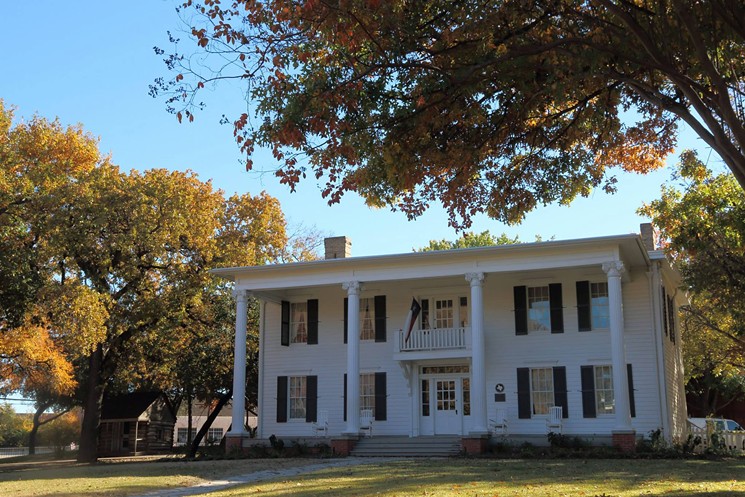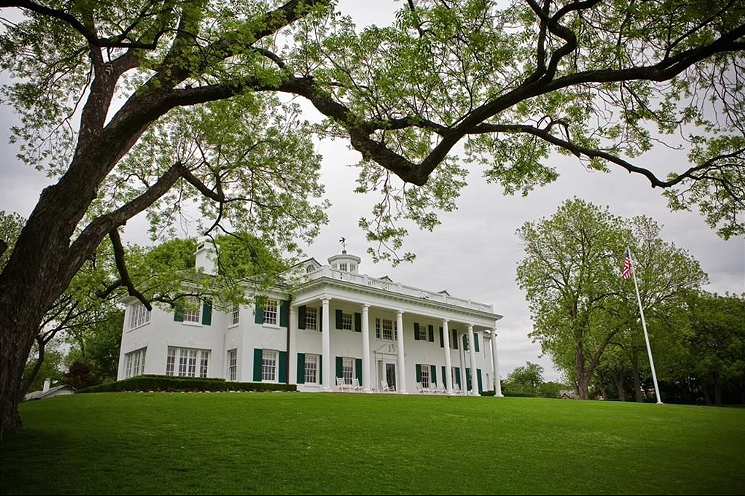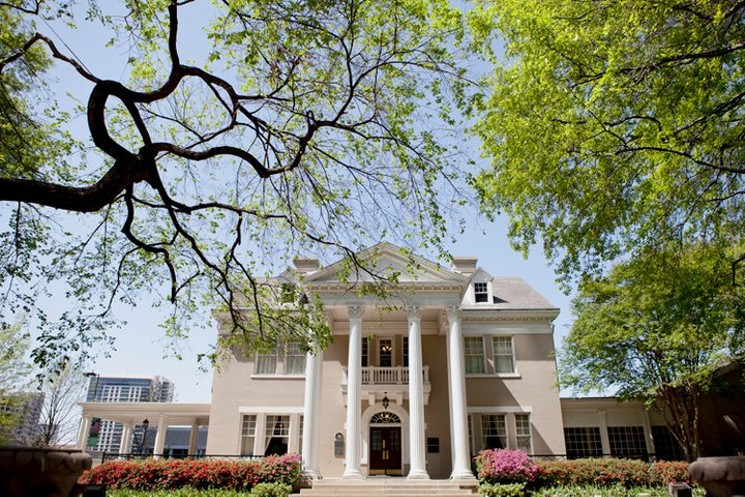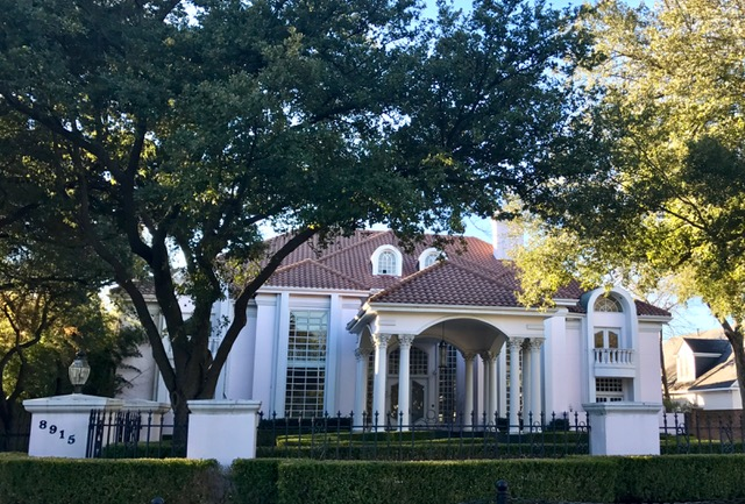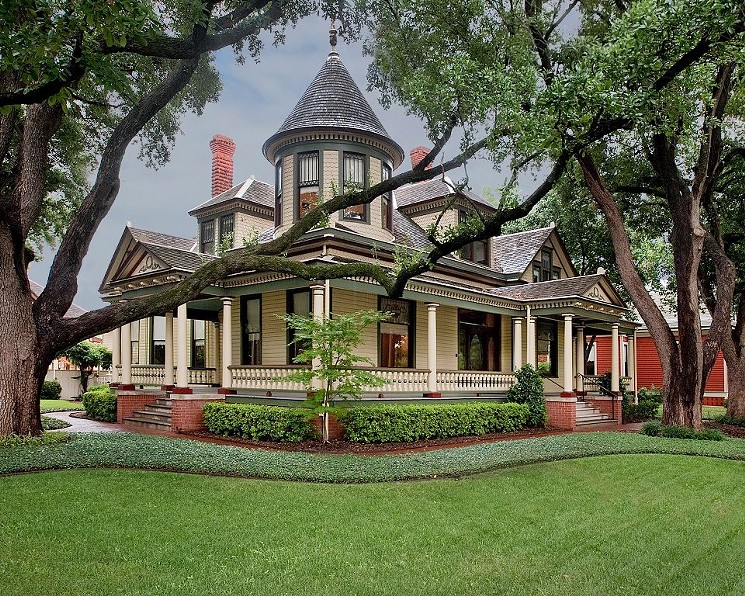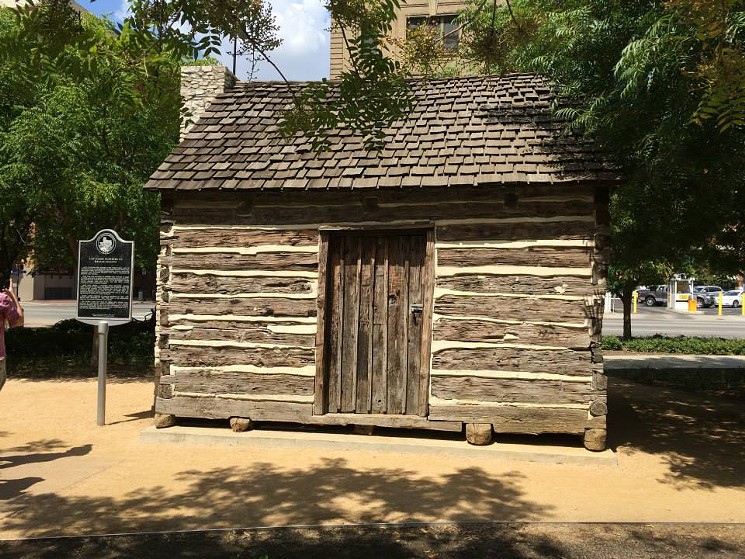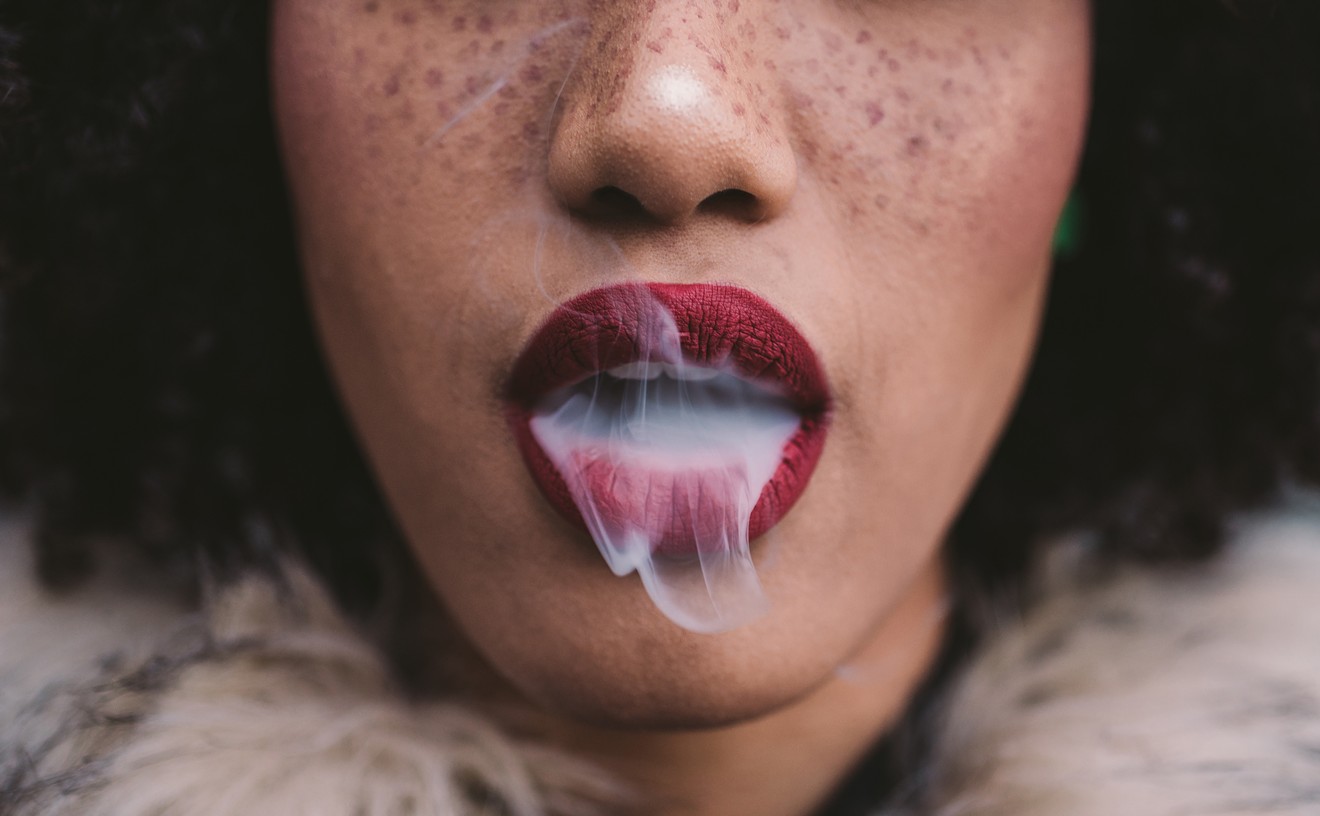Stanley Marcus Home
10 Nonesuch Road
A Dallas city landmark, the Stanley Marcus home sits on approximately three acres. The property originally consisted of six acres and, according to CBSDFW, was a gift to retail wizard Stanley Marcus from his father, Herbert, cofounder of Neiman Marcus. Lore has it that Marcus originally hired famed architect Frank Lloyd Wright to design the 1936 international modern-style palace but fired him after the original estimate soared. Roscoe Dewitt finished the home’s construction.
Millermore Mansion
1515 S. Harwood St.
Now located in Old City Park, this Greek Revival-style mansion with its grand columns and stately porch was originally located south of the Trinity River. The stark white, historical structure was built by William Miller’s slaves and completed in 1862.
Miller was a cotton farmer and Trinity River ferryman who owned 7,500 acres in what is now Oak Cliff, according to A Guide to the History of Dallas. And some say his Southern palace is haunted. The 3,900-square-foot manor is a hotspot for paranormal sleuths, and a ghostly female is said to roam the upstairs.
“In Dallas, the earliest Greek Revival buildings were commissioned by settlers from the Southern states and constructed in the 1850s,” according to Preservation Dallas, a nonprofit group that works to protect historic buildings and neighborhoods. “Unfortunately, those were destroyed by fire in 1860 along with most of downtown Dallas.”
Mount Vernon
4009 W. Lawther Drive
The former estate of legendary oilman H.L. Hunt, Mount Vernon sits on 10 acres overlooking White Rock Lake. The 10,500-square-foot mansion is a larger replica of George Washington’s Mount Vernon in Virginia. The five bedroom, neoclassical Georgian-style home has since been remodeled and is currently up for grabs.
“Much of the original structure remains — wood floors, doors and paneling, foot-thick concrete walls, marble fireplaces and hearths, [and] a remarkable 'Spirit of America' mural,” realtor Allie Beth Allman says.
A few other bells and whistles include a bowling center, must-have wine storage and a four-bedroom guest house.
Belo Mansion
2101 Ross Ave.
Belo Mansion is the former home of Colonel H.A. Belo, founder of The Dallas Morning News. The Classical Revival-style structure, which was built in 1890, was once leased to funeral home operators, according to the Dallas Arts District, and gained notoriety when the bullet-riddled body of Clyde Barrow was laid out in its parlor for public view.
Belo Mansion, an in-demand destination for lavish affairs, is now home to the Dallas Bar Association.
Mary Kay Mansion
8915 Douglas Drive
This pale pink stucco mansion is made of cosmetic guru Mary Kay Ash’s pie-in-the-sky-dreams. The 12,000-square-foot home was built in 1984, according to the blog Candy’s Dirt, and features Corinthian columns, 40-foot-high ceilings and a toilet made of “the love stone,” pink quartz.
The mansion’s price tag once topped $5 million but it sold in 2015 to an undisclosed buyer for under $2 million, the Dallas Business Journal says.
This high-end home’s swimming area was reportedly modeled after William Randolph Hearst’s mansion in San Simeon, California. Hearst Castle, by the way, also boasts an indoor Roman pool surrounded with gold inlaid tiles — but no rose quartz crapper.
Wilson House
2922 Swiss Avenue
The Wilson House, an elaborate Queen Anne design featuring a turret and wrap-around porch, was built in 1899. The turn-of-the-century structure is the crown jewel of the Wilson Historic District and also the current home of Preservation Dallas.
Frederick and Henrietta Wilson had owned the entire city block and built several other homes on their land as rental properties, most of which remain, according to Preservation Dallas. The couple’s son Laurence lived in the home, which also has a carriage house and servants quarters, until the late 1970s.
John Neely Bryan Cabin
Elm and Market streets
Known as the founder of Dallas, John Neely Bryan was an attorney, farmer and trader. Bryan set sail on a wooden raft from Bird’s Fort, which is now part of Arlington, to settle near the Trinity River in an area that later became Dallas. After several relocations, this one-room replica of the city’s first Anglo home now rests at Founders Plaza downtown.
“You can peek through a hole to see what’s inside — which is pretty much nothing,” writes a Trip Advisor reviewer.
Early American log homes, whose simple, crudely built designs were constructed of organic matter “became a symbol of the independent and self-sufficient spirit of the pioneer,” Preservation Dallas says.
“Thank you Dallas for keeping this wonderful little cabin intact for the many generations who have passed and who are to come,” writes Paula Dodd on the cabin’s Facebook page. “Dallas history lives here.”
And maybe we should share that with Dallas Heritage Village whose blog has this to say about Miller's original abode:
“Have you seen their cabin? It is smaller than one room in the new house! It is made of logs, a frontier embarrassment for respectable people who thought they should live in a refined manner. Or maybe manor.”
Paigebrooke
1 Paigebrooke
This rambling, ranch-style home was designed by famed architect Charles Dilbeck and built for former Dallas Morning News publisher Ted Dealey. The 1930s marvel was spared the wrecking ball when, according to Second Shelters, its owners sold the place but stipulated that it be perpetually preserved, or that the sellers be allowed to move it — which is what happened. The storybook structure was diced up and moved in six sections to its current location in Westlake.
Dallas’ original “Southfork”
Preston Road and Main Street
The Cloyce Box Ranch, which is now Brinkmann Ranch, was the setting for the pilot episodes of the TV show Dallas. According to Box's youngest son, Douglas, his cattle and oil baron father ended the arrangement because it was a distraction from his ranching.
The show packed up and moved to another filming location before eventually settling in Parker County. Sadly, Box’s striking, Gone With the Wind-style mansion caught fire in 1987, and Cloyce died before he could rebuild. The Frisco mansion’s haunting skeleton still stands. And in his recently released tell-all Texas Patriarch, Douglas Box describes what life was like growing up on the famous ranch.
Hicks Crespi Estate
10000 Hollow Way Road
Architect Maurice Fatio designed this sprawling, 1930s estate for Pio Crespi, an Italian count, and his wife, Florence. The 28,000-square-foot mansion changed hands in 2016 when Dallas businessman Tom Hicks sold it to billionaire banker Andy Beal. Candy Evans says the 25-acre spread’s original $100 million asking price tag was already discounted, and the estate’s actual undisclosed sales price was rumored to be around $61 million. “If President Trump ever comes to Dallas, likely he will be staying with Beal at the Crespi,” Evans says.
[
{
"name": "Air - MediumRectangle - Inline Content - Mobile Display Size",
"component": "18855504",
"insertPoint": "2",
"requiredCountToDisplay": "2"
},{
"name": "Editor Picks",
"component": "17105533",
"insertPoint": "4",
"requiredCountToDisplay": "1"
},{
"name": "Inline Links",
"component": "18349797",
"insertPoint": "8th",
"startingPoint": 8,
"requiredCountToDisplay": "7",
"maxInsertions": 25
},{
"name": "Air - MediumRectangle - Combo - Inline Content",
"component": "17105532",
"insertPoint": "8th",
"startingPoint": 8,
"requiredCountToDisplay": "7",
"maxInsertions": 25
},{
"name": "Inline Links",
"component": "18349797",
"insertPoint": "8th",
"startingPoint": 12,
"requiredCountToDisplay": "11",
"maxInsertions": 25
},{
"name": "Air - Leaderboard Tower - Combo - Inline Content",
"component": "17105535",
"insertPoint": "8th",
"startingPoint": 12,
"requiredCountToDisplay": "11",
"maxInsertions": 25
}
]

